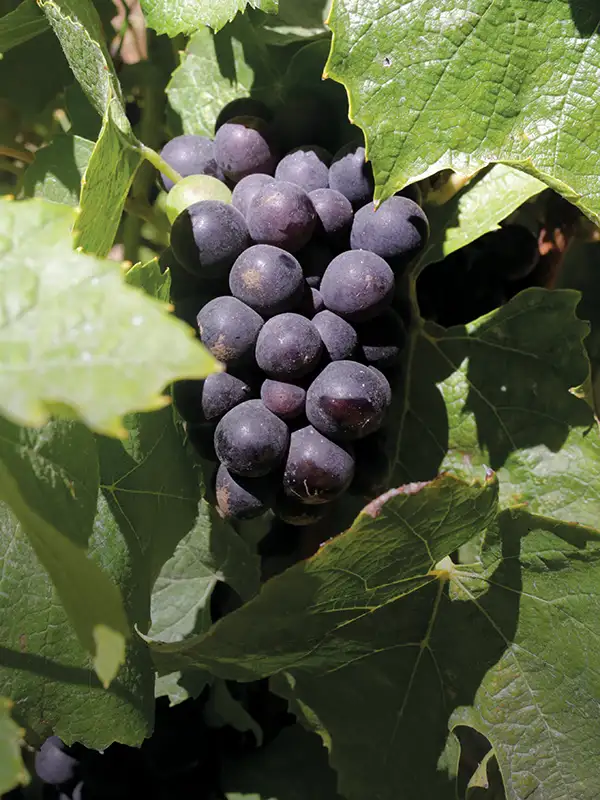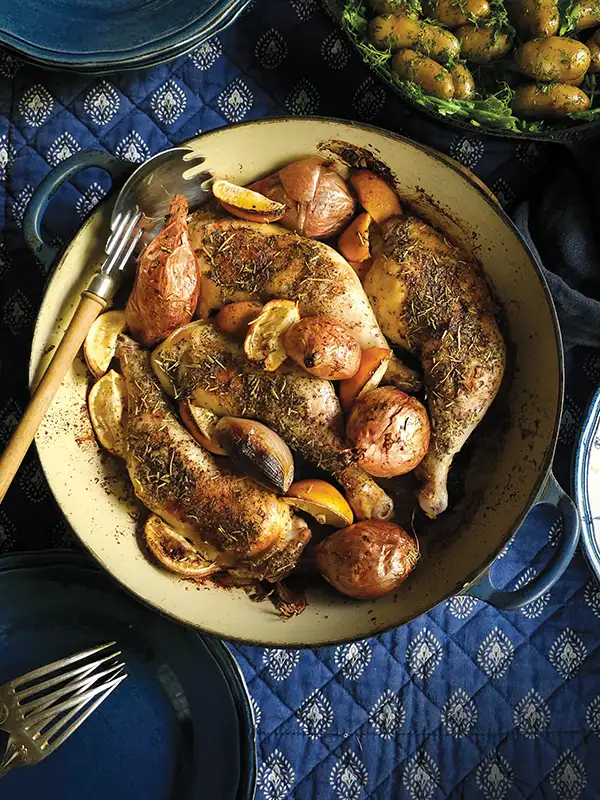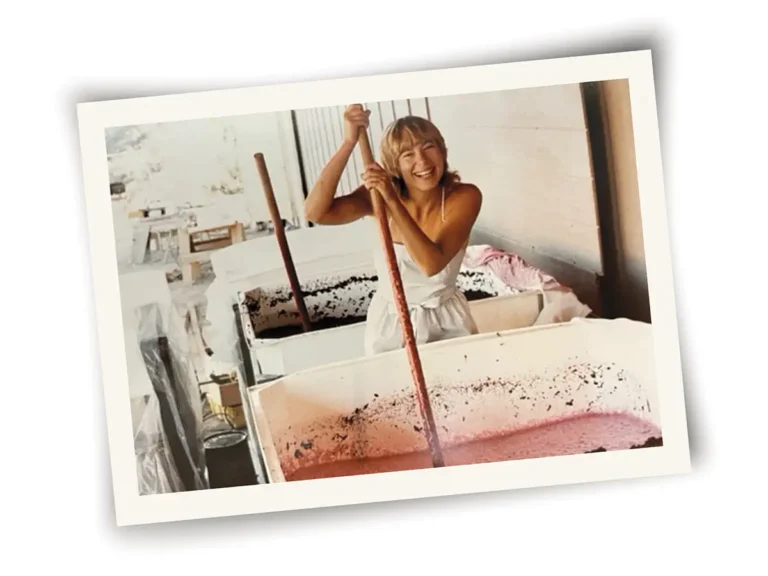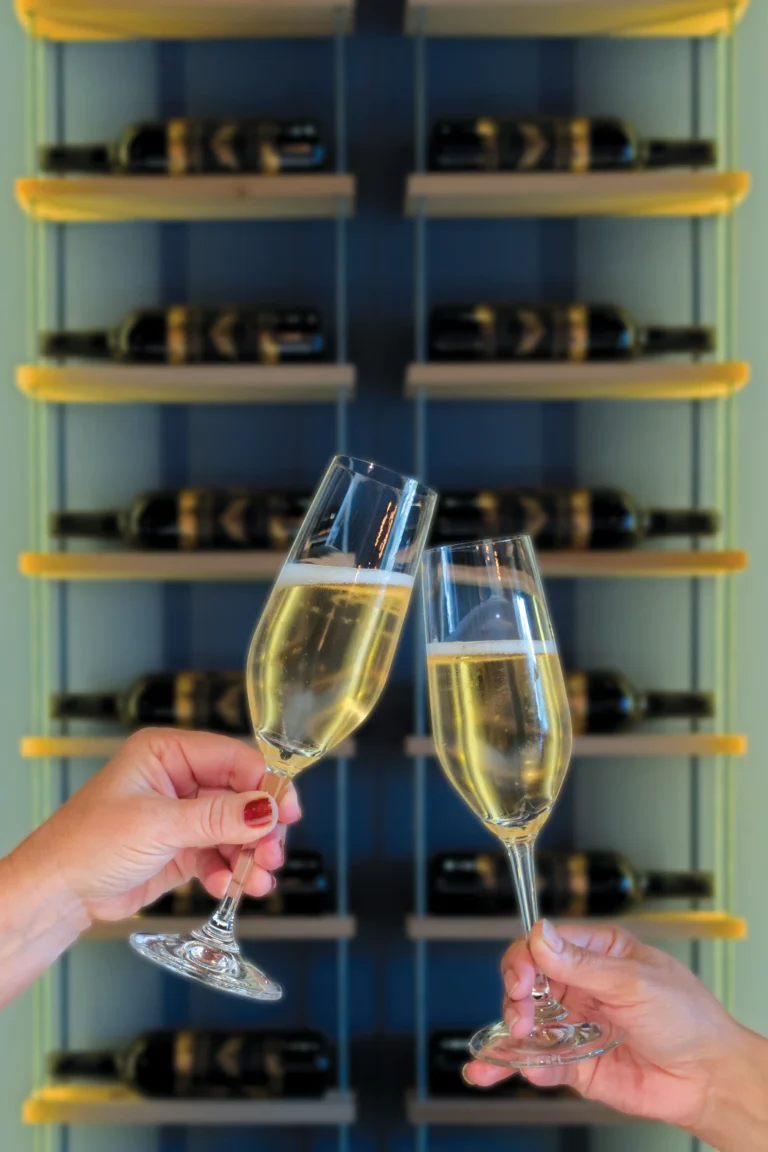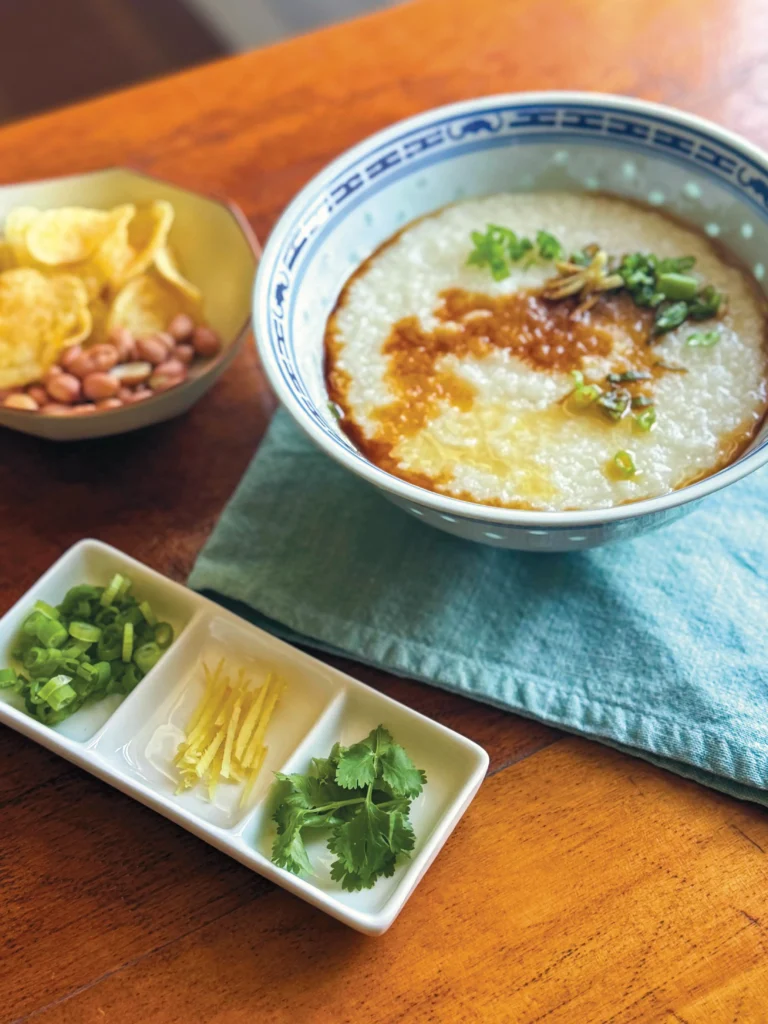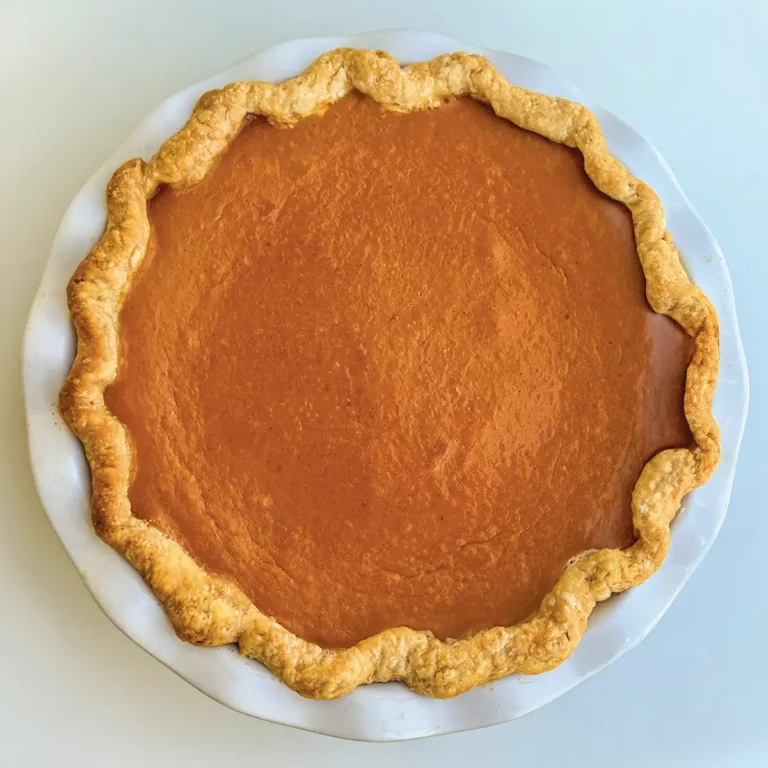From Orchard to Bottle at Rock 12 Distillery
[Photography by Rosminah Brown]
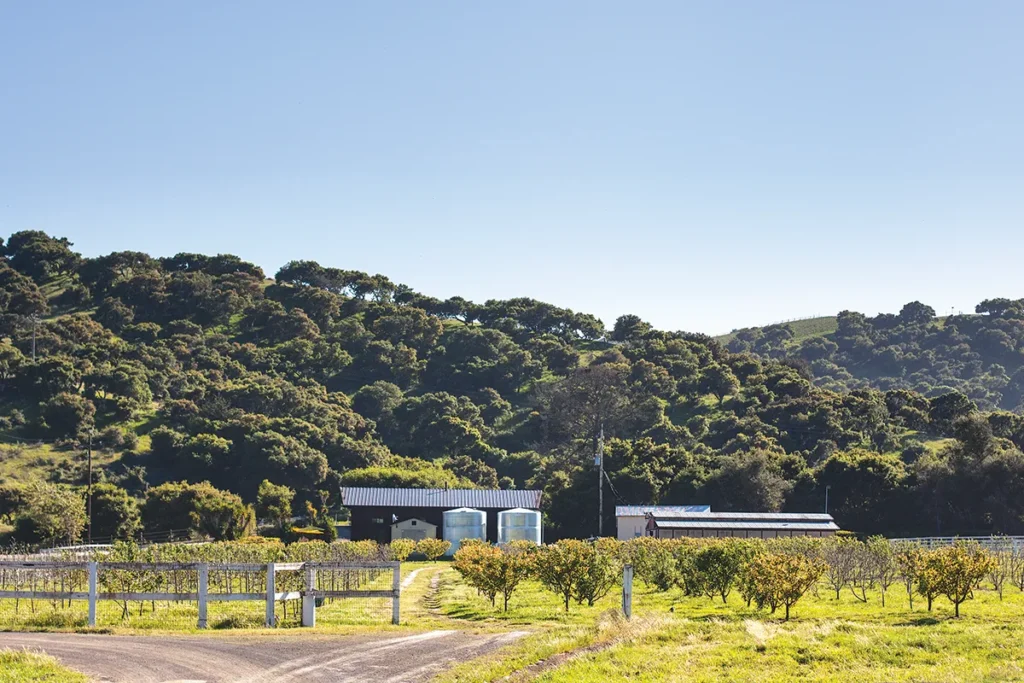

When Marko and Sarah Suput lived in Redlands, it was a world of too much traffic and stifling heat. Now in their current bucolic life, they get to open wide the barn doors on their tasting room/distillery to a stunning view down Route 246 in the heart of the Sta. Rita Hills (their property is almost directly across from Spear Winery). As the Suputs’ now-seven-in-number goat herd bleats nearby, Sarah says, “We’re trying to lean into the farm part of farm distillery.”
They have certainly come a long way from 2015, just after they had their second son and Sarah declared, “Let’s start a business together.”
The Suputs’ Rock 12 Distillery (the name comes from a favorite location of theirs in Palm Springs where, among other things, they were married) does things differently from your usual liquor producer. Their land use permit with the county, the one that they discovered was easier to score (of course, there are stories of permitting delays—this is Santa Barbara County, after all), officially makes them a winery with permission to distill. All their products—vodkas (two of which are infused), gin, amaro, coffee, quince liqueurs and many a brandy on the aging way—start with fruit and no grain at all.
Then again, their 11-acre property also grew no fruit trees when they bought it in 2016. Then, it was the Flying V Ranch, home to llamas for three decades. The Suputs have been building up their orchards—apples, apricots and quince—tree by tree since, adding up to about five acres currently. And, as Marko suggests, “Maybe someday we’ll plant a one- or two-acre small vineyard. Pinot Noir makes a beautiful brandy.”
Until they start growing their own grapes, they can count on the kindness of their neighbors. As Marko points out, “A lot of wineries are in the business of recycling wines.” One only has to think of Re:Find in Paso Robles, where the Villicanas take the saigneé from their winery and turn that into the neutral base of their distillery program. They’ve been doing it since 2011, and last year were named the Paso Robles Wine Industry Persons of the Year. The Suputs were sure to visit and learn from the Villicanas in their early days.
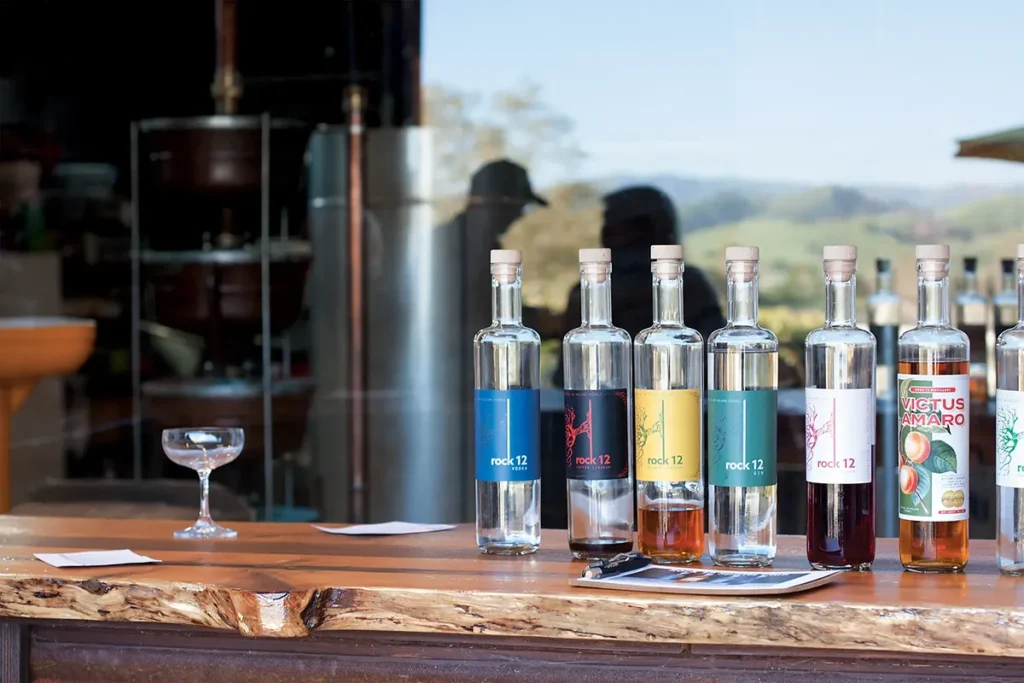
Now, all the Rock 12 work is done in their production and tasting facility, rebuilt on an old barn site on the property. Their goal this year is to produce 400–500 cases (six bottles per case) of handmade, small-batch liquor and liqueur, all distilled on either a 400-liter brandy still or a 300-liter column still.
The learning process has been tough—Marko had been a homebrewer, but distilling at a level to sell is an entirely different proposition. So, Sarah relates the couple boning up at the American Distilling Institute Conference; Marko would attend a nosing session while she would go to a panel on building your distillery.
And then there’s learning how to farm. Sarah begins, “When you start farming in your 30s and 40s…” and Marko ends the sentence, “…you read a lot of books.” That’s what got them to the somewhat unusual quince in the first place, as they read planting quince trees would help apple yields. (To learn more about Rock 12’s quince liqueur, see the Drinkable Landscape cocktail column Shaking up Quince to Convince.)
Their dream was aided by the passage of a Type 74 craft distillery law in California in 2018. Before the law’s passage, distilleries couldn’t make direct sales to customers. “Before the law, there was a three-level distribution system for liquor,” Marko explains. “Before the change, it cut your profits 40 to 50% to let those two partners in the door.”
“The brandy, distilled entirely from Santa Barbara wines, mostly reds, has a two-year aging process that occurs in three different kinds of oak. Sipping a sample of it now makes it clear how complex and pleasing it will be upon release in 2025.”
Direct-to-consumer sales, legal since the change, made a proposition like Rock 12 more attainable. Especially since the Suputs wanted to open on their own, without having to reach out to financial backers. Marko says, “We didn’t want to have to answer to others as we got started.”
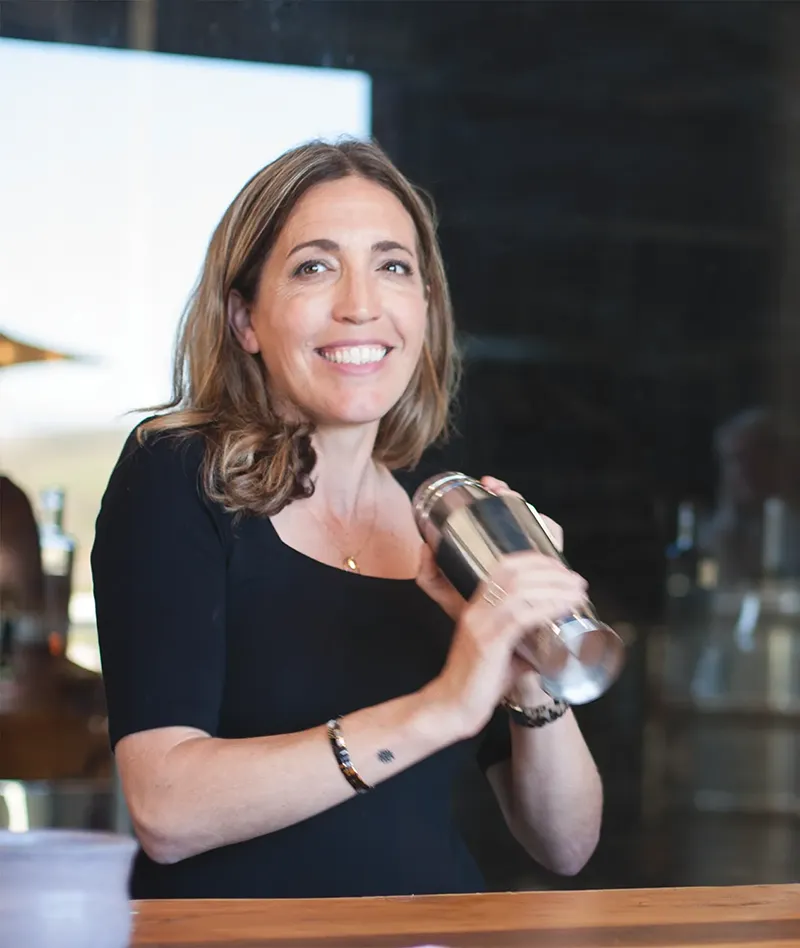
On their own, they did find out that both the farming and distilling can come down to trial and error, but fortunately, that’s right up Marko’s alley. “I’m a lab scientist, hands-on guy,” he asserts. “I’ve been doing R&D for 20 years now—it’s always been appealing to me.” Indeed, he still works a day job as a senior research and development engineer for Continuus Materials, a manufacturer that up-cycles waste to make building products.
Take Rock 12’s London dry-style gin. Yes, it’s juniper-forward, as with most gins, but it also has hints of rosemary, ginger and lemon peel. An early prototype of the gin also featured one of Marko’s favorite flavors: chamomile. It seemed to work… until they tried it with tonic. He recalls, “It didn’t play well in the G&T at all. It left a soapy finish.” So out came the chamomile.
The good news is chamomile did find a home in Rock 12’s delightfully complex and engaging Victus Amaro, which was a 2023 John Barleycorn Awards Double Gold Winner. The now-hip bitter aperitif/digestif can often have 30–40 ingredients, so Marko notes, “It’s a researcher’s dream. I’m an engineer—there were spreadsheets involved.”
Using B.T. Parsons’ encyclopedic book Amaro as his bible, Marko created a possible ingredient list—which isn’t easy, as many producers refuse to divulge even the obvious use of gentian root—cataloging which herbs, bark, flowers, roots, and peels appeared most frequently. He began his amaro with those but then came up with nifty unique items, like his chamomile and some of the apricots from the farm.
“I wanted it to be more for cocktails than an after-dinner drink,” he says. “It’s really good in an amaro sour or a spritz, and we’re working on a Boulevardier recipe.” The amaro’s name also is a tip of the hat to the property’s previous owners, Bob and Tina Westin, and their family credo “Victus,” which means “manner of living.”
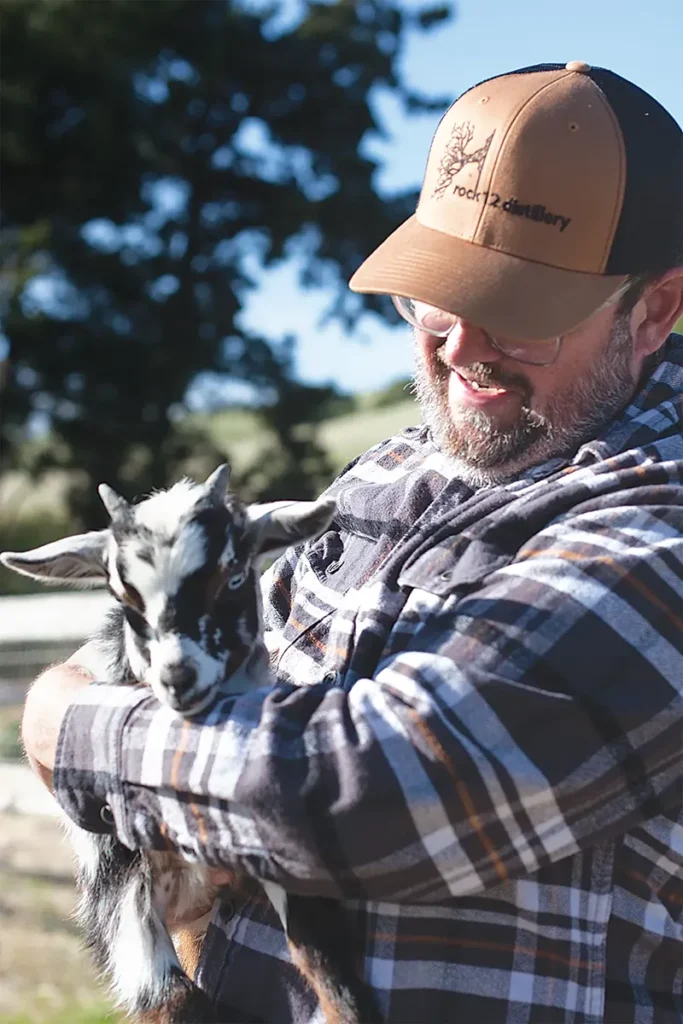
Even Rock 12’s “little bread and butter,” as Sarah calls their coffee liqueur, took a few attempts. Hoping to get the most coffee flavor they could into the bottle, they added eight gallons of cold brew into an early experimental batch. On the palate, it powerfully delighted, but Sarah admitted, “It smelled like an ashtray.” A few versions later, with a more tempered mix of dark roast and cold brew from Zaca Coffee, and a hit was born. Think of it as a less-syrupy, more-punchy (25% ABV) cousin to Kahlua.
Sarah’s background in hospitality and nonprofits serves Rock12 well, and upon moving to Santa Barbara she worked at Happy Canyon and Casa Dumetz to hone her tasting room chops and learn the region better. She likes to take the lead developing cocktails with their products, as visitors to the farm distillery get to choose either a tasting flight or a cocktail.
That process gets a bit complicated, as it’s crucial to keep things simple, for she notes, “It’s important to develop something that will be repeatable at home.” The flavored vodkas certainly help there, with the serrano-infused leaning into a spicy bloody Mary, say. The slightly more surprising and beet red hibiscus-infused made for a great winter mule, according to Sarah.
The latter vodka might be particularly fun to play with because a chef made a request for it. The Suputs asked chef Augusto Caudillo, formerly of Lompoc’s Scratch Kitchen and now at the new Terra in The Steward hotel in Goleta, for suggestions. He imagined the tropical sweet-sour of hibiscus would be a delight. As a bonus, Sarah has learned that folks touring the Sta. Rita Hills for wine find the tannic punch you get with some heavier reds matches the one found in the hibiscus vodka.
Of course, all the product now is just a preview for the major releases down the line—an apricot, an apple and a cognac-style brandy. They are particularly passion products for Marko, as he is carrying on a tradition from his Serbian family. The gorgeous, bulbous-topped brandy still even comes from Serbia, where it was forged from a single sheet of copper. Unlike the electrically powered, more traditional column still used to make the vodka and gin, the brandy still is direct-fired and requires a brass chain mixer at its bottom so the fruit doesn’t burn.
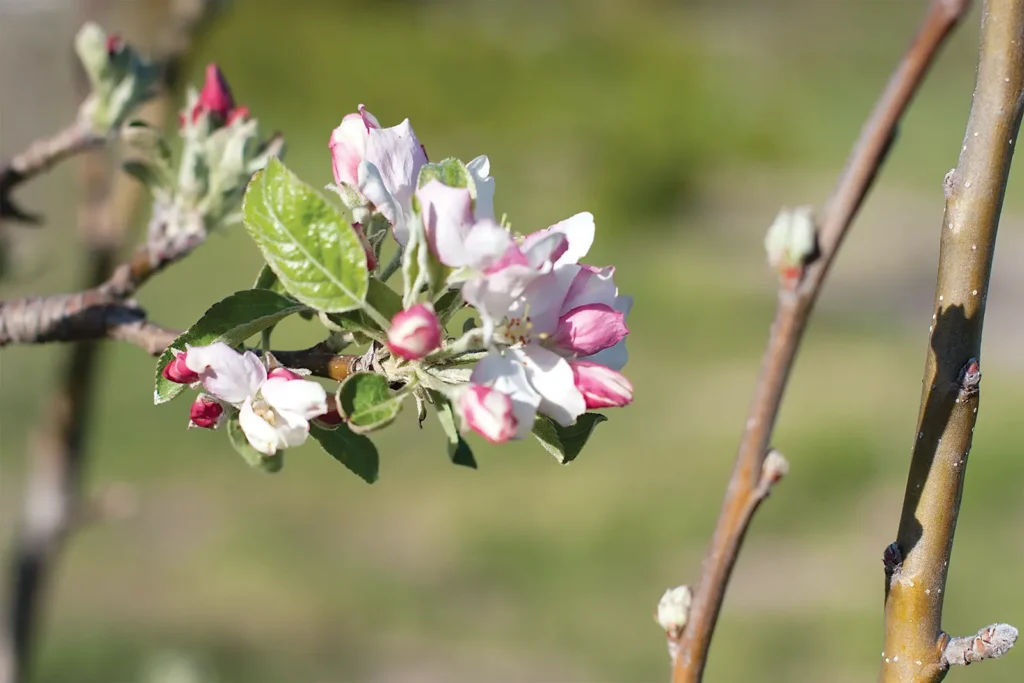
The brandy, distilled entirely from Santa Barbara wines, mostly reds, has a two-year aging process that occurs in three different kinds of oak. Sipping a sample of it now makes it clear how complex and pleasing it will be upon release in 2025.
The apple brandy will be released for their first anniversary this March. Made of all estate fruit, it is a brilliant balance of bitter and sweet, leaning on the varietals of Granny Smith, Dorsett Golden, and Honeycrisp. Despite the clear early quality of the brandy barrel samples, Marko has no airs about his aged spirits program, insisting, “We’re not snobs. I’m not afraid to put an ice cube in my brandy.”
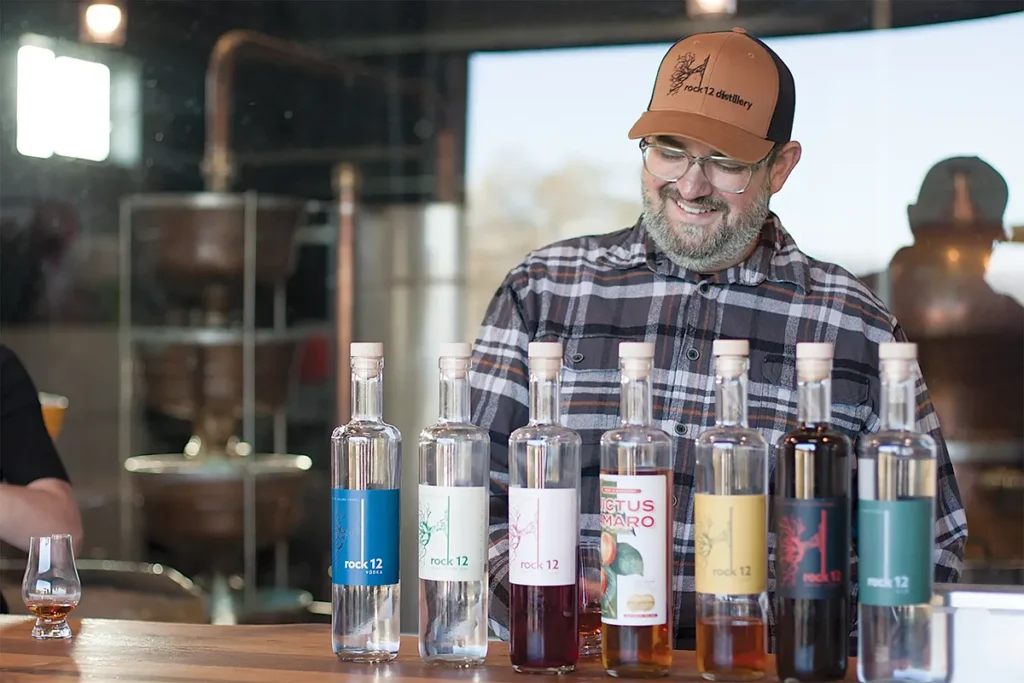
The tricky part about growth is how much is too much? Sarah stresses she learned at Casa Dumetz, “The question is, how many SKUs do you want?” Marko jumps in, insisting, “It can get overwhelming for the customers.” So, they must keep their exploratory natures in check. That doesn’t mean Marko hasn’t considered trying to make the relatively obscure French liqueur noyau, made from the stones of apricots but tasting like almonds. That connects with the Suputs’ desire to be green about their work, of course. “One of the problems with distillation is all the condensation of water,” Marko points out, “but here it goes into a leach field and under the orchard.”
Those truly interested in Rock 12 can spend the night on-site, as there’s a ranch stay property, too. Originally a profit maker as the distillery products went online, it’s now a charming way for people to experience the Sta. Rita Hills on a farm.
“It’s great seeing guests here,” Sarah stresses, “and knowing they will walk back to the two bedrooms, one bathroom and large living and dining space after tasting and buying some of our liquor.”
“We did not know about the Sta. Rita Hills before we moved here, but we have a deep love of it now,” Sarah asserts. The Suputs are particularly impressed by how collaborative the wine community has been and relish the opportunity to take part in events like the Vintners Festival and the Buellton Wine & Chili Festival.
They feel they’ve found a true home for both their family and Rock 12. “Los Angeles people can go to Temecula for a wine experience, but if they want good wine…,” Marko says about Santa Barbara wine country. “Plus, it doesn’t hurt us being surrounded by boutique wineries with small production and higher price points.”
IF YOU GO
Rock 12 Distillery is located at 6605 E. Hwy 246, Lompoc. Tasting room hours are Friday through Sunday, noon–5pm. Call 805- 246-6026 or visit www.Rock12Distillery.com for more information.

